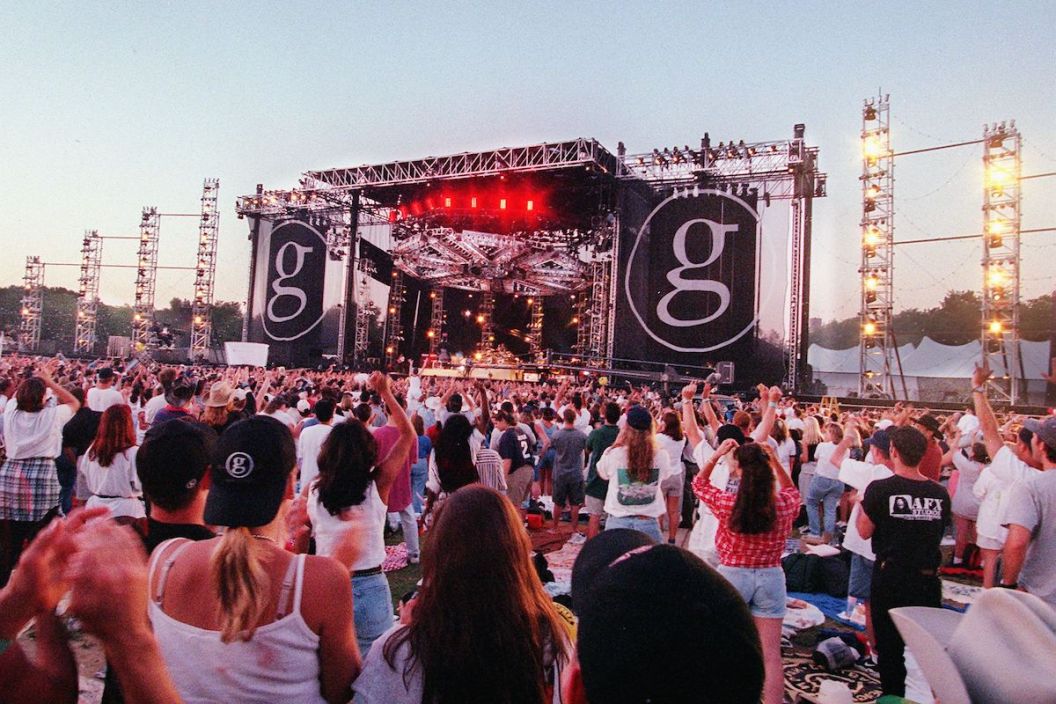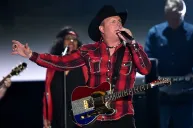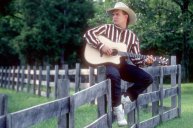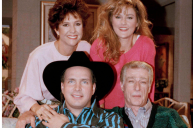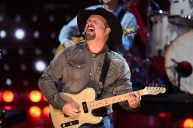At a time when pretty much everything touched by Garth Brooks turned to platinum, the scope of his free Aug. 7, 1997 concert in Central Park caused pre-show doubt for more than the notoriously cynical New York City press.
Videos by Wide Open Country
"I have nightmares about this show," Brooks once said, as quoted in Patsi Bale Cox's book on the '90s country phenomenon, The Garth Factor. "I dream that I run out on the stage and Central Park is completely empty."
During the months-long build to what got billed as Garthstock, reporters questioned how a country artist could possibly connect with a cosmopolitan, northeastern audience, although the genre's popularity had never been limited to specific regions (and Brooks contemporary Hal Ketchum and "The River" co-writer Victoria Shaw hailed from New York state). Most notably, Cox quotes the New York Daily News' prediction of a "Garthgantuan flop."
Ahistorical dismissals of country music aside, Brooks, his team and others banking on a bustling city stopping in its tracks for a "Friends in Low Places" singalong took a calculated risk to promote forthcoming album Sevens. If anything emanating from the 360 ft. concert stage failed to connect with a modest or worse turnout, the masses would know instantly because HBO's broadcast of Garth: Live From Central Park was sure to attract devoted fans and channel surfers.
A mix of GarthMania and a huge promotional push, aided in large part by radio station New Country Y-107, proved Brooks and the press wrong. The New York Fire Department's official attendance estimate totaled 980,000, making it the largest concert ever in the park. In 1983, Diana Ross drew a then-record 800,000 (though many sources credit a Paul Simon appearance in 1991 with 600,000 in attendance as the high bar cleared by Brooks). More staggeringly, CMT reported in 2003 that Brooks' previous largest crowd was no more than 100,000 at a Knoxville, Tenn. country music festival.
"They did a great marketing job because my brothers all came, and they were not huge country music fans," native New Yorker and Central Park attendee Michael Canty told Wide Open Country. "I was basically the only one who knew a lot about his music, but they came. It was an event to go to. It was a beautiful night, I remember, and it was packed, packed, packed."
One of the most successful entertainers of the moment in any medium found a new means to raise his game in a lucrative yet tough market. In the process, he created lifelong memories for established fans and curious onlookers.
"It was an event that was unique to New York, and you couldn't not go as a country fan," New Yorker and attendee Harriet Scheir said. "I had been a country convert. I knew basic Garth. I knew all of the hits, but I didn't have any of the albums. I just was a basic radio listener at the time. Going to Central Park changed all of that."
Scheir and her group of friends' experience almost went sour before the show because of the sort of infrastructural issues that typically come with ambitious, big-city happenings.
"Getting in the park was the worst part of it all," Scheir said. "Waiting on the outside and them flip-flopping on how to let us in. They had originally said that both sides of the park would open, so when we got to the city and saw the line really, really long on the upper east side, we told our cab driver to drive through the park and take us to the west side where the line was much shorter. We got in the line on the west side, and that was about [3 a.m.]. At maybe [1 p.m.], the cops came by and told us that they were only going to open up the east side. Everybody who was on the west side of the park would have to walk all the way around the park and get on the end of the line at the east side.
"We were like, that's not happening, so my friend walked up to a cop," Scheir continued. "We had her 9-year-old son who was taking a nap on a park bench. She said, 'You see that little boy over there? He's got asthma. And we've been here since 3 in the morning. How fair is it that you're going to make us get at the end of that line when we could've been somewhere in the middle of it at 3 in the morning?' The cop said, 'Don't worry. Follow us. Don't even go.'"
Scheir's luck with police amid her insistence on scoring and keeping a desirable spot in the park's North Meadow carried over to the concert.
"I got stepped on by a horse doing crowd control," she said. "The horse stepped back, and I was trying to go around it. When it stepped back, it stepped on my foot. When it rains, right on the instep of my right foot, I still have that physical memory of it every so often. The cop said, 'Lady, I can take you to the hospital, but I guarantee you're never going to get back to this spot again. Do you want to go or do you want to tough it out?' I said I'll tough it out."
Neither a long wait in the summer heat nor competition for an optimal view of the stage or big screens spoiled the moods of Scheir, Canty or many among the 979,998 others lucky enough to witness a pop culture milestone.
"There was a lot of camaraderie," Schier said. "You got to know your neighbors. If you went for food, you'd save each others' spots. People think that New Yorkers aren't accommodating, but we are."
"I hate to reference everything by 9/11, but the city was a different place pre-9/11," Canty said. "The cops were great. The crowd was great. Everybody was having a blast."
As for the live experience, Scheir vividly remembers the sounds of both Brooks' band and hundreds of thousands of previous and freshly-won fans.
"When 'The Thunder Rolls' started, I thought that the weather was changing literally because I had never experienced 'The Thunder Rolls' live before," she recalled. "It really reverberated through the park and sounded like it was coming from far away like that thunder was rolling in. I went, 'What's going on? Are we going to get stormed on after all of this hot weather?'"
Audience-pleasing surprises included an encore-opening Brooks duet of "American Pie" with Don McLean and performances of "Ain't Goin' Down ('Til the Sun Comes Up)," "New York State of Mind" and "You May Be Right" with the pop-rocker embodiment of the Big Apple, Billy Joel.
"I knew they were friends and Garth had done 'Shameless,' and for lack of a better term, Billy Joel is an ambassador for the city of New York," Canty said. "I knew that if Garth Brooks was the showman that he said he was, he'd be stupid not to invite Billy Joel. I knew the crowd would go crazy once Billy Joel hit the stage."
While Scheir and Canty remember that night vividly and fondly, Brooks' mind flashes back to nothing more than an adrenaline rush.
"It was so big and it happened so fast, you don't remember a lot of it," Brooks told Entertainment Tonight in 2017 while promoting a two-night stand at Yankee Stadium. "Everything was great there, but as far as the show itself it was such a blur."
Aside from making a positive impact on many of its attendees, Brooks' historic concert equaled ratings and industry acclaim for HBO. Garth: Live From Central Park received 14.6 million viewers, making it the most-watched concert broadcast of 1997. It earned six Primetime Emmy Award nominations, including one for Outstanding Variety, Music or Comedy Special. At the following ACM Awards, Brooks was presented a Special Achievement Award for the premium cable event by his future wife, Trisha Yearwood.
Beyond furthering Brooks' preexisting reach into the live TV and VHS markets, gambling and winning in Central Park positively impacted album sales, with Capitol Records reporting increases of as much as 114 percent (for 1994 compilation The Hits).
